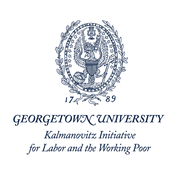Youngstown 2010, the city’s award winning community plan, is structured around four principles that have provided the framework for all of the work that has followed:
- Accepting that Youngstown is a smaller city
- Defining Youngstown’s role in the new regional economy
- Improving the area’s image and enhancing quality of life
- A call to action.
Most of the favorable attention Youngstown has received for 2010 has resulted from the first principle-focusing on being a smaller sustainable mid-sized city rather than continuing to mourn the past. Less attention has been devoted to the second principle-defining Youngstown’s role in the new regional economy.
Both physically and mentally Youngstown is located at the center of a bi-state region. Despite this fact, Youngstown has long defined itself as being at the edge of two urban centers-Cleveland and Pittsburgh. This perception is beginning to change because our nation and region are changing. As the community understands these new realities, we will be better able to identify new economic opportunities for Youngstown and the Mahoning Valley.
To thrive in this changing world, we must take a long view-looking 30 years ahead to new economic patterns rather than looking back to the industrial world of more than 30 years ago.
Between now and 2040 our nation will absorb another 100 million people. Only India, with a population of 1.1 billion, will add population more quickly than the United States. According to Arthur Nelson and Robert Lang of Virginia Tech’s Metropolitan Institute, the majority of this population growth will be accommodated within just 20 “megapolitan areas.”
Megapolitans are, in essence, the Combined Statistical Areas of the 21st Century. Like CSAs, megapolitans are defined by empirical evidence of overlapping commuting patterns. The country’s 20 megapolitan regions are already home to about 60% of Americans and account for nearly 70% of our Gross National Product. Nelson and Lang project that this economic dominance will only intensify by 2040.
Northeast Ohio and Western Pennsylvania together constitute one of the 20 megapolitans. Nelson and Lang call it the “Steel Corridor,” a name which evokes the region’s proud past but unfortunately does not point to a promising future. Congressman Tim Ryan and his colleague in Western Pennsylvania, Jason Altmire of Aliquippa, have coined a more future-oriented name, the “Tech Belt.”
The Steel Corridor/Tech Belt is home to 7.1 million people. It is larger that Ohio’s other megapolitan, the “Ohio Valley,” anchored by Columbus and Cincinnati (5.3 million) and is the same scale as the “Carolina Piedmont,” anchored by Charlotte and Raleigh (7.0 million), the “Georgia Piedmont,” surrounding Atlanta (6.9 million), the “Florida Corridor” linking Tampa and Orlando (7.8 million), and the “Greater Metroplex” of Dallas-Ft. Worth and Oklahoma City (7.9 million)
Despite its impressive scale, the Steel Corridor/Tech Belt is projected to remain the nation’s slowest growing megapolitan and the least likely to benefit from the nation’s projected population growth.
These projections give rise to several important questions: How can the region compete for its share of the nation’s growth in population and wealth? How can its communities compete against others in the faster growing megapolitans as places to live, work and invest? What role should city governments and universities play in advancing our understanding of the threats and opportunities that lie ahead?
Many across the region are beginning to ask these questions. On October 1, 2007, Representatives Ryan and Altmire co-convened the first “Tech Belt Summit,” bringing to Youngstown State University 100 business, educational, and philanthropic leaders to discuss organizing a Tech Belt initiative to leverage the strengths of the entire region. Ryan urged the participants to think of the Tech Belt not as a collection of aging steel centers but as an “economic unit able to compete with Shanghai and Mumbai.”
This summer the regional dialogue continued when Youngstown State University hosted the first “Cleveland+Pittsburgh+Youngstown Regional Learning Network,” a collaboration of community organizers, public officials, and philanthropies dedicated to making the region’s communities attractive, equitable, and sustainable.
The Learning Network has invited Ryan and Altmire to discuss their Tech Belt initiative at its second summit-a day-long session at the Youngstown Club on November 7,, 2008. I would urge area residents concerned with the future of our region to join the Network and attend this session.
Everyone else should keep an eye on the “Steel Corridor.” Youngstown’s experience of deindustrialization predicted what would happen around country in the 1970s and 80s; our “Tech Belt” future may well do the same for 2040.
Hunter Morrison

